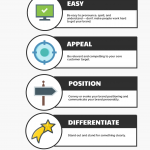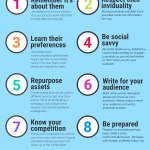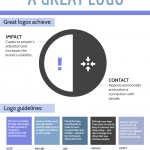
The titles we give to people are incredibly important indicators of what we consider their role to be within a certain context. Doctor, partner, mother, father, supplier, recipient, driver, pilot – the list is endless but has a common theme. A title indicates what we expect from someone, which is why the term ‘consumer’ is not only inaccurate but is irrelevant for any business who wants to develop beyond an industrial era model.
The Industrial Economy
In the industrial economy the prevailing value chain was simple.
Production > Market > Consumption
Roles were clearly defined, where businesses would produce goods or products, these would be brought to a market, and would then be ‘consumed’ by consumers. This linear process was simple in its structure, if not always in practice. Each actor in the process would be responsible to either creating value or consuming value. In the industrial era value chain the consumer would ‘eat’ value, being the final link and end of the chain of value.
Even within this seemly simple industrial value chain, the consumer began to derive value themselves from their consumption. In contemporary consumer culture, the development of self-identity became an important function of consumption, where ‘identity is defined through the exchange, possession and use of goods’. As people shaped their identity through consumption, they identified themselves partly through their role as consumers. The consumer itself became an ‘important social ‘role’ or ‘identity’, the economic analogue of the ‘citizen.
Post-modern individuals are on a never-ending identity quest; a quest to define the meaning of their lives. Consumers go to markets to produce their identity – specifically their self-images.
As the role of the consumer developed, we began to see the introduction of what was termed the ‘productive consumer’ or the ‘active consumer’. This label acknowledged and indicated that the consumers role was no longer solely that of ‘consuming’ value but that they also had an active, productive role too.
The role of the active consumer has been defined in many ways, ‘co-creation’, ‘peer production’, ‘immaterial labor’, ‘crowdsourcing’, ‘prosumer’ (‘prosumer’ being producer/consumer) and the ‘value constellation’. These approaches primarily consider the active consumer as contributing ‘human capital’ or ‘intellectual capital’, which can be described as ‘knowledge that can be converted into profit’.
As the economy and the roles of consumers have developed, so the economy has become increasingly intertwined with culture, making the role of the ‘consumer’ multi-faceted. Economic life has become increasingly ‘culturalized’ and culture is more ‘economically inflected’.
A Digital Era
The capitalist economy is no longer structured through the temporal sequence of production, markets and consumption, as the economists and Marxists still teach us. So the term consumer was fine for the era of the factories of Smith and Marx, whose products would be destructively consumed, but when consumers are productive and active is the term ‘consumer’ actually useful or helpful as a definition?
Value Creators
As outlined previously, the ‘active consumer’ now creates value in a number of ways. Take, for example, the ‘immaterial labor’ of self-service which has effectively turned people into creators of value for businesses. From people collecting, delivering and building their own IKEA furniture, to the self-service utility of ATMs, to the dispensing of the need for waitering realized so effectively by the likes of McDonalds and Burger King et al.
This type of value creation is primarily focused on the direct and specific benefit to the person involved, and has little in the way of interaction with the organization of production. However, there are further types of value creation which go beyond immaterial labor and see people providing essential productive capital, ripping up the industrial era value chain model in the process.
By productive capital, we mean that people will contribute assets or resources which can then be used by a business from which to gain profit or advantage.
Examples of these include:
- contributed wealth – crowdfunding is a great example of where the finance contributed by people is the productive capital by which a business can derive a profit. Without the contributed wealth the production could not happen, and therefore the industrial era value chain is turned on its head. Here people are contributors, not consumers.
- co-create identity through content – businesses who make products have found smart ways of encouraging people to go beyond simply ‘consuming’, by enabling them to then share how they use the product. A prime example of this is Go-Pro, which selects peoples created footage of how they are using the camera to show to the world how great their product is. This is ‘consumers’ creating marketing aimed at further consumers, so not really consumers then.
- essential content – one of the most important shifts in the role of people to create rather than simply consume value is in the creation of essential content. Some of the largest companies in the digital age have their most valuable, if not all of their, content created by people. The value of Facebook, Twitter, AirBnB, Pinterest, LinkedIn, etc, is not so much in the platforms they create but in the content people produce on these platforms. Without this content the platforms would be worthless, so are people consumers here or actually the producers of the value?
The Third Wave
This shift away from people simply being consumers was predicted by the futurist and author Alvin Toffler, in his book The Third Wave. He describes The First Wave as being the Agricultural revolution, where there was no producer and consumer and people mainly produced and consumed what they required. The Second Wave was the industrial age, in which the producer and consumer became primarily two separate entities, with the ‘market’ in the middle. The Third Wave is the digital age, in which we are seeing the collapse of the producer – consumer dichotomy and the re-emergence of the prosumer.
As Toffler put it, ‘“Just as the feudal manor was replaced by the business corporation when agrarian societies were transformed into industrial societies, so too should the older model of the firm be replaced by a new form of economic institution.” This new institution will combine economic and trans-economic objectives. It will have multiple bottom lines. Crowdfunded projects, the co-creation of identity and shared content, the ‘platforms’ on which people create essential content – these are all excellent examples of where we find what Toffler termed prosumers (producer consumers).
So what does this mean for businesses who want to treat people not simply as the consumers who ‘eat’ the value at the end of the industrial era value chain, but instead want to involve people in producing some form of value? Well, here George Ritzer and Niels Jurgenson have four very insightful pieces of wisdom on the prosumer.
- ’The first is the inability of capitalists to control contemporary prosumers in the way – and to the degree – that they have been able to control producers, consumers, and traditional prosumers’
- ’Second, it is difficult to think of prosumers as being exploited in the same ways as producers and even consumers are exploited. The idea that the prosumer is exploited is contradicted by, among other things, the fact that prosumers seem to enjoy, even love, what they are doing and are willing to devote long hours to it for no pay’
- ’ Third, there is at least the possibility of the emergence of a whole new economic form, especially on the internet. Capitalism involves the exchange of money for goods and services, and profits are made in those exchanges. However, little or no money changes hands between the users and the owners of many websites (for instance, users do not pay Facebook or Twitter to use the services)’
- ’Fourth, traditional capitalism, either producer or consumer capitalism, is based on scarcity, but prosumer capitalism online is increasingly a world of abundance.’
Forget About Consumers
The labels we give to people will affect what we, and they, expect their role to be within a certain context. If you want to move your business and brand beyond the industrial era model, forget about treating people as consumers. Maybe consider people as prosumers. Or better still, simply treat them as people.
Don’t let the future leave you behind. Join us in Hollywood, California for Brand Leadership in the Age of Disruption, our 5th annual competitive-learning event designed around brand strategy.
The Blake Project Can Help: Accelerate Brand Growth Through Powerful Emotional Connections
Branding Strategy Insider is a service of The Blake Project: A strategic brand consultancy specializing in Brand Research, Brand Strategy, Brand Licensing and Brand Education
FREE Publications And Resources For Marketers

























